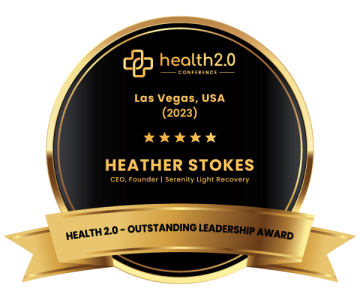As clients continue along their path to sobriety with Serenity Light Recovery, they must learn to recognize triggers. Nearly anything can be a trigger: a situation, a location, a person, or even an emotion. These are things leading someone to start using again or fall back into negative habits. Thus, understanding the types of triggers prepares clients to avoid them and build a lasting recovery.
Types of Triggers
It is perhaps easiest to break down the types of triggers into three categories: environmental, social, and emotional. Sometimes a client’s trigger overlaps categories. Focus should be on where the triggers come from and what techniques a client has to address them.
Environmental Triggers: This trigger is among the easiest to recognize. There are certain locations that you used to or remind you of your time using. Often, these places are forever associated with substance abuse. The sooner you can identify such locations, the sooner you can avoid them. Sometimes it may even be necessary for you to move to a different neighborhood or city to avoid environmental triggers. Remember, it is not your responsibility to change the environment but rather to avoid it altogether.
Social Triggers: This type of trigger is anything dealing with social interactions reminding you of your substance abuse. Typically, this is a person. Perhaps a friend you used with or a family member you have a strained relationship with. But it could also be a type of social situation such as a party driving you to feel the desire to use. There are some triggers that you cannot avoid. But whenever possible, you should avoid social triggers. If you know that a certain party or event will bring up memories of your past, find a way to decline the invitation respectfully.
Emotional Triggers: Perhaps the most difficult types of triggers to recognize are emotional. Often this is because there is an underlying mental health issue or emotional problem you might not fully understand. As you strive to avoid emotional triggers, you will have to learn how to manage your emotions. Common emotional triggers are stress, anger, loneliness, exhaustion, depression, and fear.
Relapse Prevention
There some things you can do to help prevent relapse. Also, you can think of them as tools to protect yourself if you do start to slip. First, try to stay busy, but not too busy. Pick up a new hobby, take a walk, write in your journal, watch a movie, etc. Also, anger management or working with a therapist helps manage your emotional states. Self-care is vital. This includes eating right, exercise, and getting plenty of sleep. Always be alert. Don’t get overconfident. Letting your guard down can lead to relapse. Work on building up your confidence because being full of self-pity can also lead to relapse. You hear it all the time, ‘Take it one day at a time.’ This simply means be client and focus on what is happening to you at the moment.
Serenity Light Recovery’s addiction therapy programs and substance abuse treatments can see you or a loved one through addiction to recovery. We can provide you with the knowledge and tools you need to identify types of triggers, avoid relapse, and stay sober. Contact us at (281) 431-6700 to learn more.

As our CEO, Heather’s main calling is to stay true to the vision of the organization, which is saving lives and striving to redefine statistics by raising the standard of care with evolving treatment methods. Heather studied psychology at LSU and both the main and Clear Lake campuses of the University of Houston, and she is a certified IASIS provider and CPI instructor. She’s been helping people in recovery since 2011. Heather’s motto to live by is “I am not what I’ve done; I am what I’ve overcome.”




